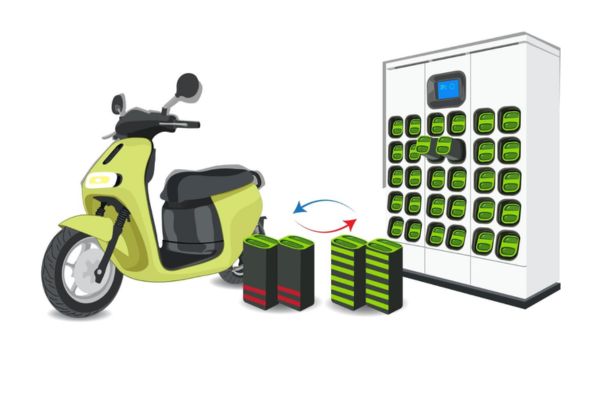The global electric vehicle battery swapping market size is forecasted to exceed around USD 31.64 billion by 2033 and is growing at a CAGR of 26.95% from 2024 to 2033.
The global EV battery swapping market is poised for significant growth, driven by the rising demand for electric vehicles, faster charging alternatives, and solutions to range anxiety. This innovative charging method offers a compelling value proposition by significantly reducing the time required to power EVs. However, the market faces hurdles such as inconsistent battery technologies, high initial investments, and operational costs associated with setting up swapping stations.
Despite these challenges, the sector is brimming with opportunities. The rapid growth of shared e-mobility, alongside the introduction of advanced and flexible battery swapping solutions by key industry players, is expected to accelerate market expansion during the forecast period.
What is EV Battery Swapping?
EV battery swapping allows electric vehicle owners to exchange depleted batteries for fully charged ones in a matter of minutes—eliminating the long wait times associated with traditional charging. Drivers can simply pull into a swap station, where their used battery is replaced with a fully charged one, streamlining the refueling process.
This system has been further bolstered by the rise of the Battery-as-a-Service (BaaS) model. By separating battery ownership from the vehicle, BaaS reduces the upfront cost of EVs. Customers pay only for the energy they consume, cutting both acquisition and downtime costs.
Key Market Insights (2023)
- Asia-Pacific led the global market, holding a 43.60% share.
- Europe ranked second with a 27.80% share.
- By service type, the subscription model dominated, accounting for 66% of revenue.
- By station type, manual swapping stations generated 57% of total revenue.
Market Drivers and Challenges
Key Advantages:
- Faster Charging: Swapping slashes wait times, especially beneficial for high-usage vehicles like taxis and delivery fleets.
- Accessibility: Ideal for users without home or workplace charging infrastructure.
- Cost Efficiency: Reduces EV ownership costs through BaaS and leasing models.
Main Challenges:
- Lack of standardization across battery types and vehicle models.
- Issues related to battery health, degradation, and safety.
- High costs of setting up a widespread swapping infrastructure.
Additionally, the COVID-19 pandemic disrupted the automotive industry but also accelerated the adoption of small-format e-mobility vehicles. OEMs have responded by introducing swap-compatible EV models to meet evolving consumer needs.
Growth Drivers and Future Outlook
The global push for EV adoption has increased the need for faster charging infrastructure, positioning battery swapping as a crucial solution—especially in densely populated urban areas where minimizing downtime is essential.
According to the International Energy Agency (IEA), EV sales reached 14 million in 2023 and are projected to exceed 17 million by 2024. This growth directly fuels demand for more swapping stations worldwide.
Government support continues to play a vital role. For instance, India’s NITI Aayog (2022) introduced a battery swapping policy aimed at building a strong infrastructure ecosystem, with incentives for businesses investing in this space. Similarly, China has rapidly deployed swapping stations with the help of favorable regulations.
Trends and Future Developments
The adoption of battery swapping is expected to grow with advancements in technology, changing consumer behaviors, and infrastructure improvements. Collaborative efforts between automakers and tech companies are leading to standardized battery designs, improving interoperability and user experience.
By 2025, the German Society for International Cooperation estimates that over 12,370 battery swapping stations will be needed globally—highlighting the scale of expansion underway.
Segmental Analysis
- Battery Type:
Lithium-ion batteries dominate due to their efficiency and alignment with clean energy goals. - Station Type:
Automatic stations are projected to grow faster as global EV numbers rise and automation becomes more cost-effective. - Service Model:
Subscription-based services lead the market due to affordability, convenience, and lower upfront EV costs. - Application:
Two- and three-wheelers are the top users of battery swapping, particularly in high-density regions, due to their affordability and ease of use in congested traffic.
Regional Insights
- Asia-Pacific leads the market, driven by high EV adoption, affordability, and environmental awareness.
- Europe ranks second, fueled by carbon emission reduction targets and EV policy support.
- North America is gaining traction, supported by growing consumer awareness and government incentives.
- South America, the Middle East, and Africa show emerging potential, especially for two- and three-wheeled EVs as practical urban transport solutions.
Get more details@ https://www.cervicornconsulting.com/sample/2426

















